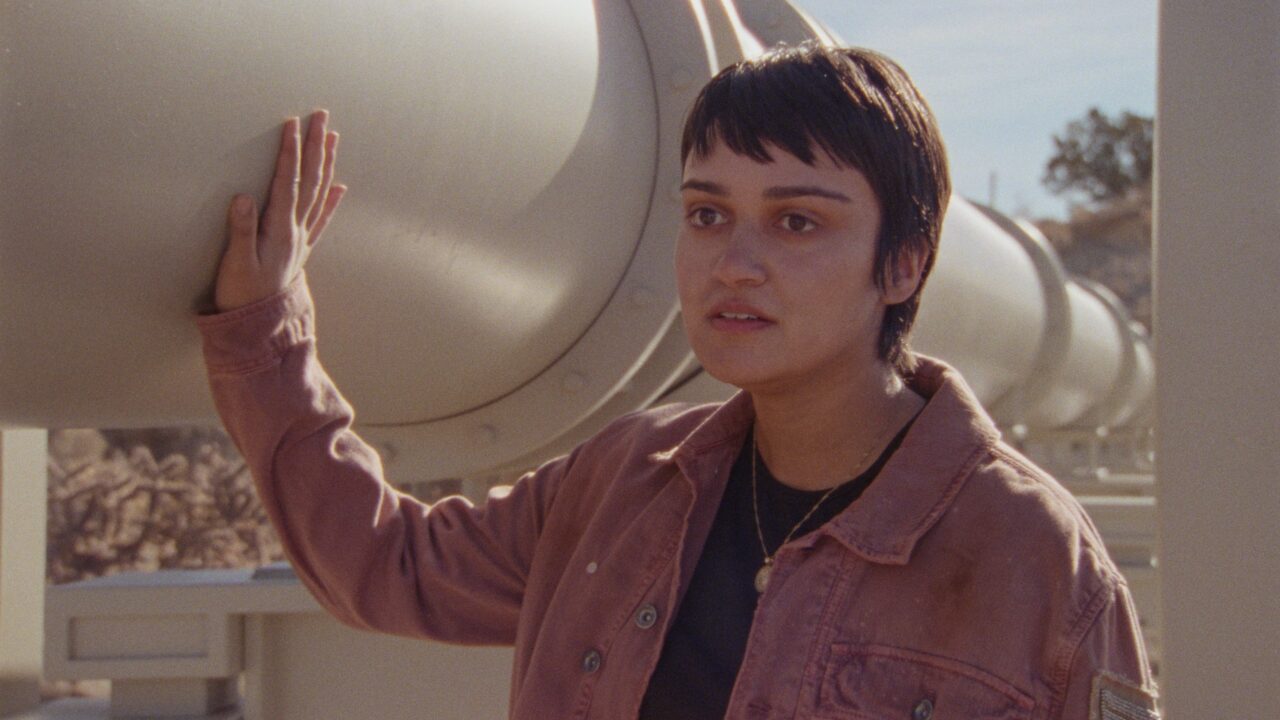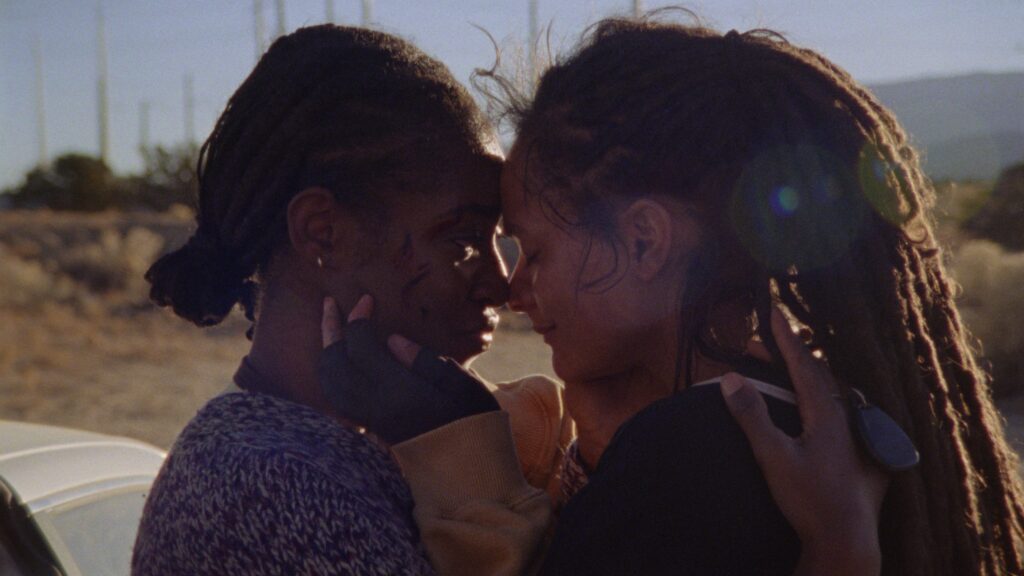How Not To Make an Eco-Thriller
Daniel Goldhaber’s radical heist film fails to make its case. Still image from the film, "How to Blow Up a Pipeline" / EF Neon
Still image from the film, "How to Blow Up a Pipeline" / EF Neon
For a film whose title, plot and source material concern a dramatic act of radical protest, “How to Blow Up a Pipeline” is disappointingly pedestrian. It is laser-focused on its heist-plot to the point of tunnel vision, sorely missing the larger context of its own ecological musings, while somehow ending up scatterbrained thanks to a nonlinear structure that deflates its own tension at every turn. Director Daniel Goldhaber, who co-wrote the script with Jordan Sjol and actress Ariela Barer, is adept at creating momentum, but demonstrates a perplexing failure to maintain it, thanks to a structure that combines a slow burn character drama and adrenaline-fueled action in a way that forces each to step on the other, clawing its own path to the surface, rather than working in tandem. The movie begins as its eight central characters are on their way to place explosives at strategic points along a Texas oil pipeline, and then proceeds to spend significant time in momentum-disrupting flashback mode, building haphazardly to foregone conclusions.

The nonfiction book on which the film is based, “How to Blow Up a Pipeline: Learning to Fight in a World on Fire” is a provocative argument for sabotage by the Swedish academic and climate activist Andreas Malm. The film accepts Malm’s radical position and translates it into a fully-formed perspective. However, in the form of a fictional script, this unshakable commitment yields dull drama and emotional inertia, since it’s one which the characters rarely wrestle on screen. Despite its litany of flashbacks, not nearly enough time is spent with any individual or their emotional and political journeys. They largely serve as broad stand-ins for ideas about pushing for radical change, though few are well-rounded enough to make convincing cases for their choices. They hail from a wide spectrum of identities and experiences that (with a few minor exceptions) are sketched only superficially, yielding what amounts to a loosely tethered 104-minute ensemble piece — an identity politics saga that lacks a sense of identity. Xochitl (Barer), the closest to a lead character, is the most alluring on paper: driven by a tragic loss, she is the only character we see struggle (if too briefly) with her efforts to enact nonviolent change. Xochitl’s childhood friend, Theo (Sasha Lane), meanwhile, is struggling with a terminal diagnosis, though her flashbacks don’t allow her a moment to ruminate on her mortality, or her relationship with her girlfriend Alisha (Jayme Lawson), whose own major decisions pull a 180 off screen.
Despite its litany of flashbacks, not nearly enough time is spent with any individual or their emotional and political journeys.
Xochitl’s diligent filmmaker classmate, Shawn (Marcus Scribner), is in tow for the pipeline bombing, as are a pair of laid-back stragglers, Logan (Lukas Gage) and Rowan (Kristine Froseth), whose motives are something of a late reveal. The movie approaches effective drama with a minor pair of its eight players, in the form of Michael (Forrest Goodluck), a frustrated Native American youth from North Dakota who spends his time picking fights with poor out-of-state oil workers, and middle-aged redneck Dwayne (Jake Weary), whose family land was seized by the U.S. government in order to build an oil refinery. Michael and Dwayne harbor the kind of fury that makes their involvement engrossing. They also exist at opposite ends of a thematic spectrum. Michael, the group’s bomb maker, acts as if he has nothing to lose, while for Dwayne — a family man with a newborn child — everything is on the line.
Goodluck and Weary embody these backstories in every action and interaction in the film’s present. However, they’re the only actors allowed to express themselves this way, through mood and body language. Lane, an otherwise stellar actress (“American Honey”) feels like she ought to play Theo with something resembling the fatalism of Goodluck’s portrayal of Michael, but she’s rarely given the chance, since Theo is most often tasked with providing levity in the form of down-to-earth moments of casual relatability, which seldom clash with her radical worldview. She and the other remaining characters are written with singular traits, which are meant to add up to the whole of human experience. But they never do, because none of the characters quite feel wholly human on their own.

The film’s approach to the “heist” at its center does not help these matters. Much time is spent setting up complicated explosives and coordinating detonations, though the hurdles to executing these plans are seldom (if ever) established in advance of suddenly arising. These scenes yield brief moments of real tension and technical interest, but the movie is too quick to cut away to its next scheduled flashback, rather than letting the tension cascade. A booming electronic-orchestral soundtrack by composer Gavin Brivik is tasked with much heavy lifting, and adds propulsion to micro-climaxes when things go off the rails. But again, the edit works against these moments at every turn, with smash cuts to black title cards and ill-timed returns to more backstory. This undermines the few sequences that manage to be genuinely gripping, and lets the audience slip away from emotionally investing in the characters or their quest.
Michael, the group’s bomb maker, acts as if he has nothing to lose, while for Dwayne — a family man with a newborn child — everything is on the line.
It is easy to armchair-direct an ambitious project like “How to Blow Up a Pipeline” in retrospect, but it’s hard not to wonder what might’ve been had it featured half as many characters, or perhaps run an hour longer, or even just placed greater narrative emphasis on its most compelling characters, rather than spreading its limited runtime across each of them equally.

Ironically, the fact that the characters are defined primarily by individual traits, but fail to coalesce as a dramatic collective with interpersonal dynamics, weakens the central theme of committed group action. It also prevents the characters from reflecting one another in ways that might have added depth to the drama. For instance, de facto leader Xochitl is driven by loss, but the impending demise of her friend Theo barely registers with her, and there’s little conflict stemming from her own actions placing her friends in mortal danger. Similarly, the two sides of Michael and Dwayne’s pincered white-hot anger, sourced from social and personal experience, never come into contact. No two characters’ perspectives ever seem to clash. Nor do any characters’ reasons for radical action ever feel like a reckoning for something larger or more important, no matter how much they claim this to be the case, since these ideas are expressed only through fleeting dialogue, rather than depiction or dramatization.
Ironically, the fact that the characters are defined primarily by individual traits, but fail to coalesce as a dramatic collective with interpersonal dynamics, weakens the central theme of committed group action.
Apart from Michael and Dwayne, everyone’s past and present feel like two different movies; one about motivation, the other about action. What they do feels disconnected from why they do it, and what they say feels at odds with why they say it. The camera does not help, trained as it often is on the logistical aspects of planning and executing the titular bombing, rather than widening its lens to capture either the human drama in the margins, or the wider circumstances driving its characters in the first place. Ultimately, “How to Blow Up a Pipeline” amounts to a far-too literal expression of its title — a stylized instruction manual for modern-day monkey wrenchers already hip to the cause, rather than a compelling exploration of the case for eco-sabotage, or the complex emotional journeys that lead people to become true believers in the urgency and righteousness of blowing up a pipeline.
Independent journalism is under threat and overshadowed by heavily funded mainstream media.
You can help level the playing field. Become a member.
Your tax-deductible contribution keeps us digging beneath the headlines to give you thought-provoking, investigative reporting and analysis that unearths what's really happening- without compromise.
Give today to support our courageous, independent journalists.





You need to be a supporter to comment.
There are currently no responses to this article.
Be the first to respond.